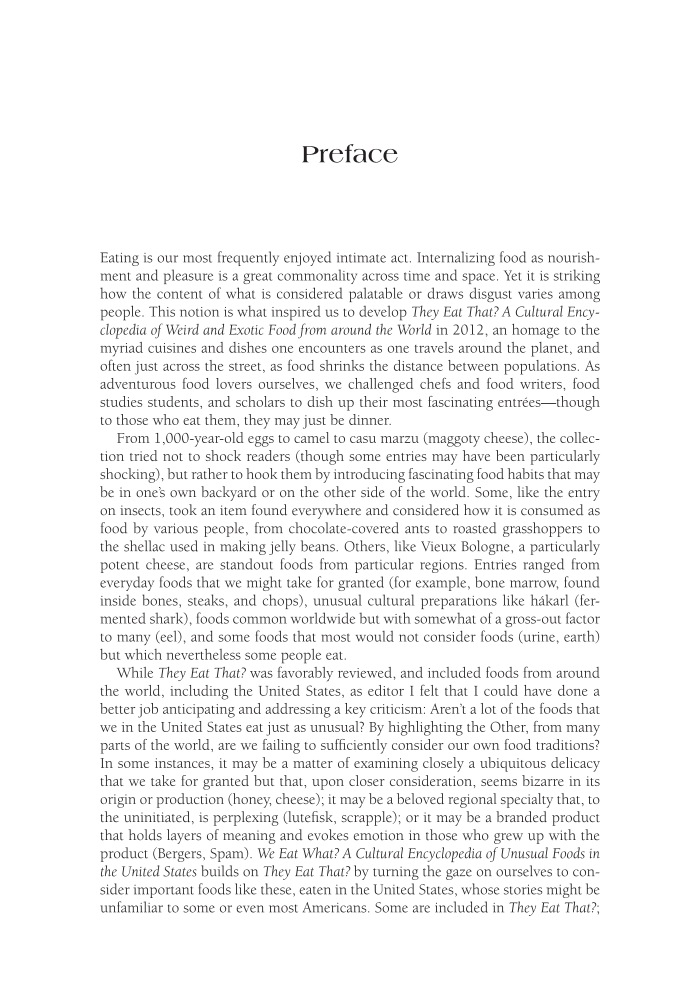Preface Eating is our most frequently enjoyed intimate act. Internalizing food as nourish- ment and pleasure is a great commonality across time and space. Yet it is striking how the content of what is considered palatable or draws disgust varies among people. This notion is what inspired us to develop They Eat That? A Cultural Ency- clopedia of Weird and Exotic Food from around the World in 2012, an homage to the myriad cuisines and dishes one encounters as one travels around the planet, and often just across the street, as food shrinks the distance between populations. As adventurous food lovers ourselves, we challenged chefs and food writers, food studies students, and scholars to dish up their most fascinating entrées—though to those who eat them, they may just be dinner. From 1,000-year-old eggs to camel to casu marzu (maggoty cheese), the collec- tion tried not to shock readers (though some entries may have been particularly shocking), but rather to hook them by introducing fascinating food habits that may be in one’s own backyard or on the other side of the world. Some, like the entry on insects, took an item found everywhere and considered how it is consumed as food by various people, from chocolate-covered ants to roasted grasshoppers to the shellac used in making jelly beans. Others, like Vieux Bologne, a particularly potent cheese, are standout foods from particular regions. Entries ranged from everyday foods that we might take for granted (for example, bone marrow, found inside bones, steaks, and chops), unusual cultural preparations like hákarl (fer- mented shark), foods common worldwide but with somewhat of a gross-out factor to many (eel), and some foods that most would not consider foods (urine, earth) but which nevertheless some people eat. While They Eat That? was favorably reviewed, and included foods from around the world, including the United States, as editor I felt that I could have done a better job anticipating and addressing a key criticism: Aren’t a lot of the foods that we in the United States eat just as unusual? By highlighting the Other, from many parts of the world, are we failing to sufficiently consider our own food traditions? In some instances, it may be a matter of examining closely a ubiquitous delicacy that we take for granted but that, upon closer consideration, seems bizarre in its origin or production (honey, cheese) it may be a beloved regional specialty that, to the uninitiated, is perplexing (lutefisk, scrapple) or it may be a branded product that holds layers of meaning and evokes emotion in those who grew up with the product (Bergers, Spam). We Eat What? A Cultural Encyclopedia of Unusual Foods in the United States builds on They Eat That? by turning the gaze on ourselves to con- sider important foods like these, eaten in the United States, whose stories might be unfamiliar to some or even most Americans. Some are included in They Eat That?
Document Details My Account Print multiple pages
Print
You have printed 0 times in the last 24 hours.
Your print count will reset on at .
You may print 0 more time(s) before then.
You may print a maximum of 0 pages at a time.




































































































































































































































































































































































